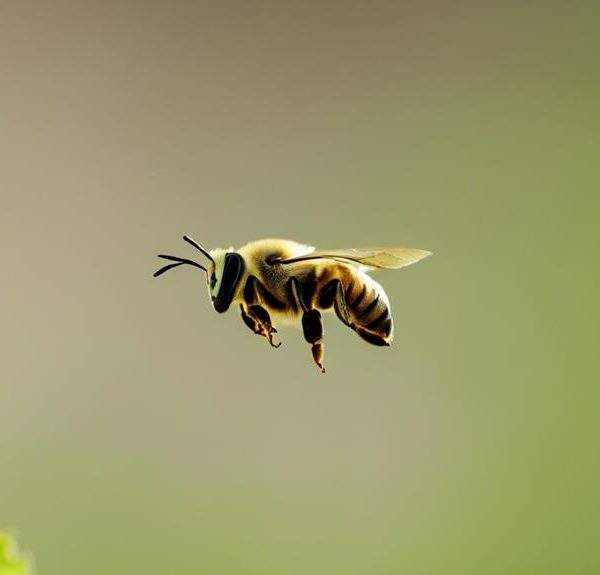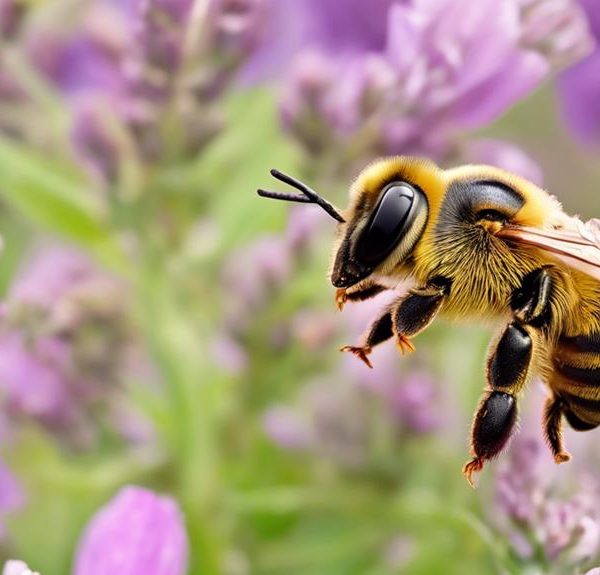Leafcutting antics of the Texas Leafcutter Bee reveal a fascinating ecological role, discover the secrets behind its unique nesting process.
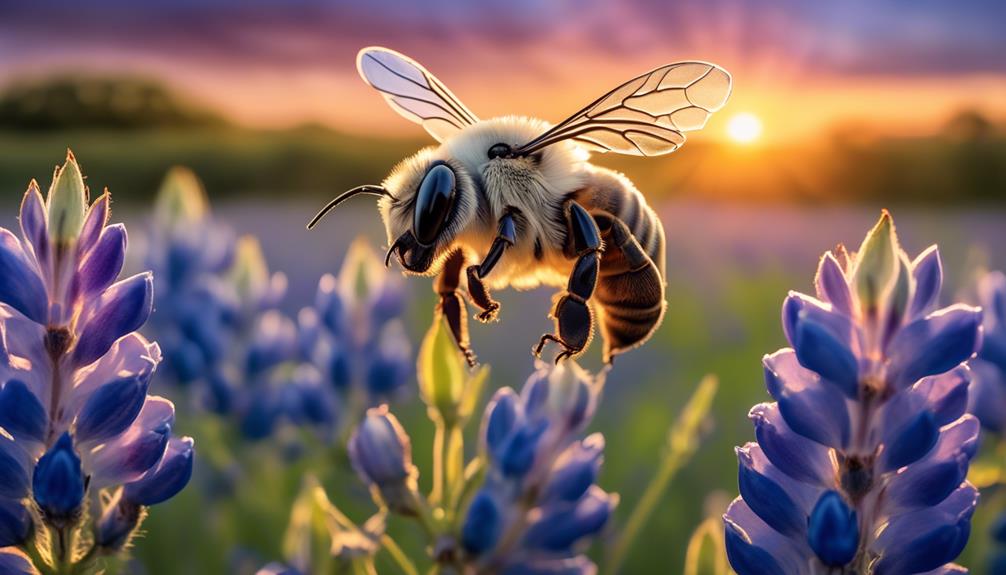
Texas Leafcutter Bee
You probably don't know that the Texas Leafcutter Bee, a solitary insect, is one of the most important pollinators in North America.
These bees are unique in that they cut leaf fragments to construct their nests, hence their name.
You might wonder why a bee would go through such an elaborate process just for nesting. Well, there's a fascinating reason behind this, and it's tied directly to the leafcutter's crucial ecological role.
But let's not spill all the secrets at once, shall we?
As we unfold the life and habits of this remarkable creature, you'll discover more than just an insect with a penchant for leaf-cutting.
Key Takeaways
- The Texas Leafcutter Bee is a solitary insect that constructs nests by cutting pieces of leaves or flowers.
- They are important pollinators that aid in plant reproduction and improve soil quality through their nesting habits.
- Threats to the Texas Leafcutter Bee include pesticide exposure, habitat loss, and climate change.
- Conservation efforts focus on reducing pesticide use, protecting natural habitats, and mitigating climate change to preserve the Texas Leafcutter Bee population.
Understanding the Texas Leafcutter Bee
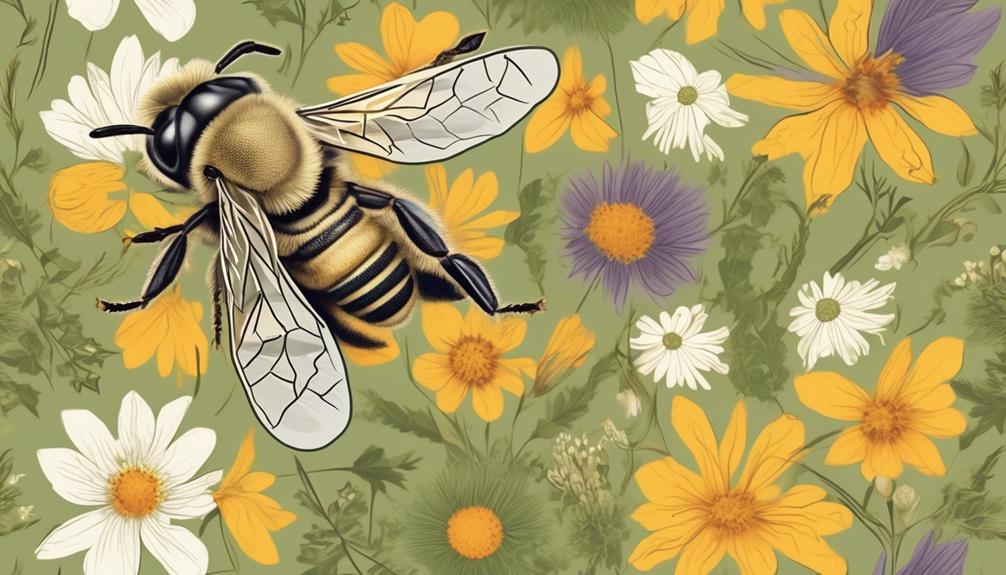
To fully grasp the nature of the Texas Leafcutter Bee, you must delve into its unique characteristics, behaviors, and ecological roles.
This solitary insect is often mistaken for a honeybee due to its similar size, but it's distinct with its dark, shiny body and the patches of orange or white hairs on its thorax.
Unlike honeybees, Leafcutter bees don't live in colonies. They're solitary creatures, with each female constructing and providing for her own nest. They've got an extraordinary behavior of cutting pieces of leaves or flowers, which they use to build their nests.
You should also know that Leafcutter bees play a vital ecological role. They're prolific pollinators, often more effective than honeybees. Their method of 'buzz pollination' releases more pollen, which is beneficial for certain plants. They're essential for maintaining biodiversity, helping plants reproduce, and contributing to our food system.
Understanding the Leafcutter bee's nature isn't just about appreciating its uniqueness. It's about acknowledging its crucial role in our ecosystem and, in turn, our survival. So, it's important you respect and protect these hardworking creatures.
Life Cycle of Leafcutter Bees
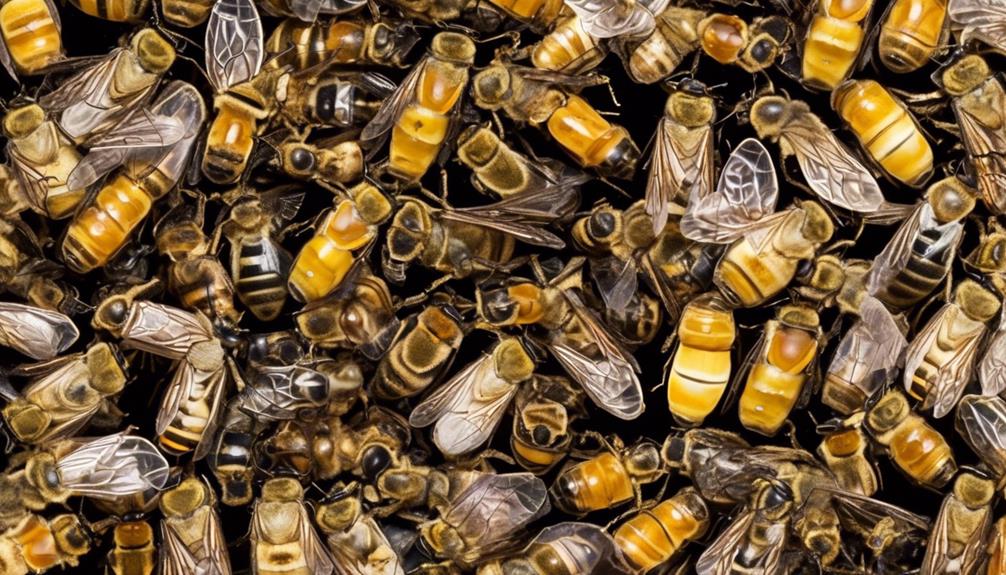
Having grasped the unique nature and ecological importance of the Texas Leafcutter Bee, let's now examine the intriguing stages of its life cycle. The journey begins with the egg stage. The female leafcutter bee lays her eggs in a nest she has meticulously constructed from leaf fragments.
These eggs then proceed to the larval stage, where they feed on a mixture of pollen and nectar prepared by the mother bee before she laid the eggs. During this stage, the larvae undergo several molting periods, each time growing larger until they reach the pupal stage.
In the pupal stage, the transformation into an adult bee occurs. This metamorphosis involves dramatic changes in the body structure as the bee prepares for its adult life.
Here's a concise table to break it down:
Stage | Description |
|---|---|
Egg | Laid by female in a leaf-constructed nest |
Larvae | Feeds on pollen-nectar mix, undergoes molting |
Pupa | Transformation into adult bee |
Thus, the life cycle of the Texas Leafcutter Bee is a fascinating demonstration of nature's complex and efficient systems.
Unique Behavior and Nesting Habits
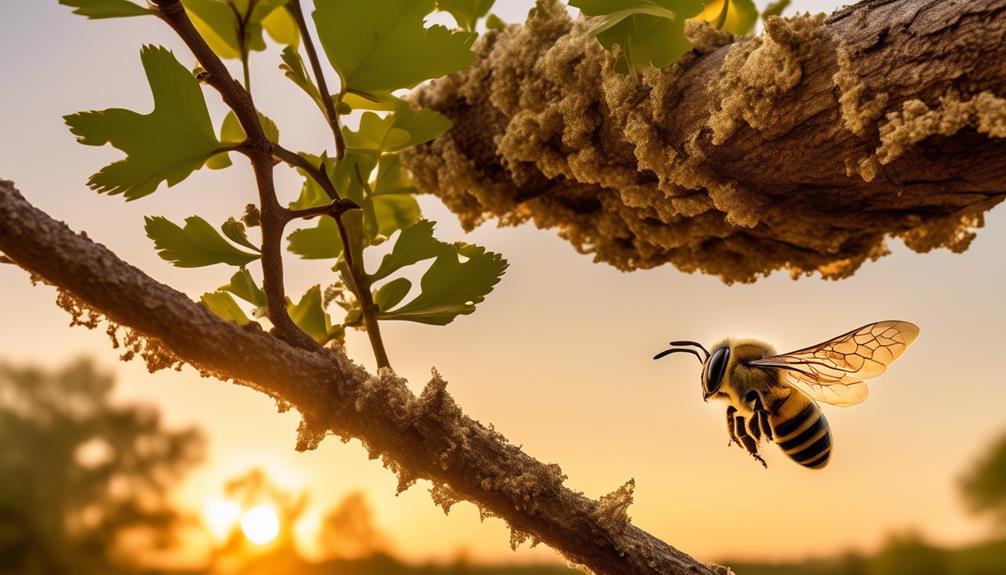
Now, let's delve into the distinctive behavior and nesting habits of the Texas Leafcutter Bee, a fascinating creature renowned for its meticulous construction of nests using leaf fragments. This bee exhibits an intricate behavior pattern when building its nests.
It first locates a suitable crevice or hollow, often in dead wood or thick-stemmed plants. Using its strong jaws, it snips neat, circular pieces from leaves and brings them back to the chosen nest site.
The bee then arranges these leaf pieces in a layered, cylindrical pattern to form a cell, lining the walls of the cavity. This task is performed with such precision that the leaf lining appears almost seamless. Inside this leafy cell, the bee deposits a ball of pollen and nectar, onto which it lays an egg. It then seals the cell with additional leaf pieces, creating a secure, moisture-proof chamber for the larva to develop in.
The Texas Leafcutter Bee's nesting habits demonstrate an advanced level of behavioral complexity and an intricate understanding of materials and construction techniques. This meticulousness, combined with their non-aggressive nature and important role in pollination, makes them a crucial part of our ecosystem.
Ecological Role of Leafcutter Bees
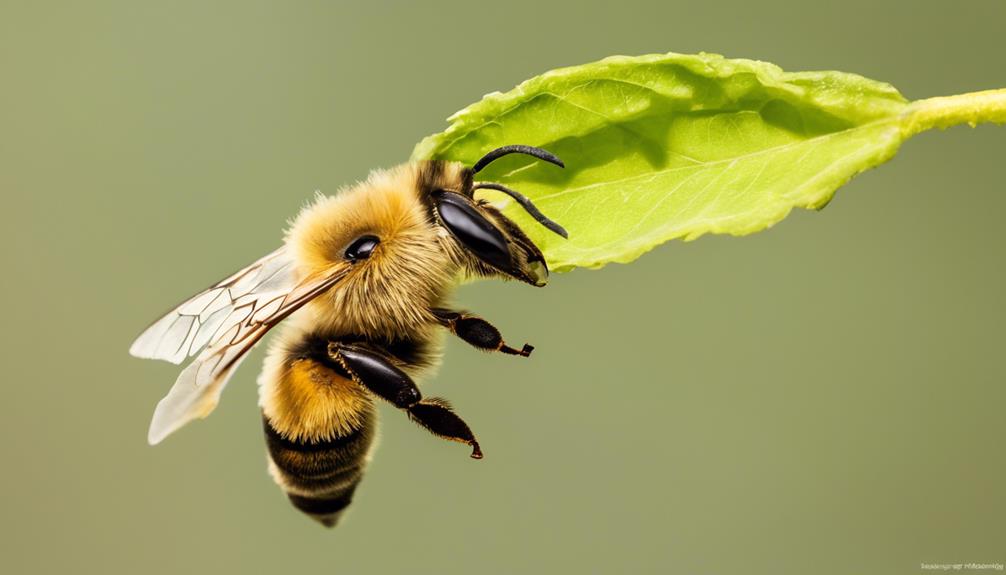
While appreciating the Texas Leafcutter Bee's fascinating nesting habits, it's essential to understand the critical ecological role these industrious insects play in our environment. They're vital pollinators, transferring pollen from male to female plant parts as they forage for nectar and leaf material. This pollination aids in plant reproduction, essential for the survival of countless plant species and the animals that rely on them for food and habitat.
Leafcutter bees also contribute to the ecosystem through their nesting habits. By excavating nests in the ground, they aerate the soil, improving its quality and health. This activity tends to increase the soil's ability to retain water, enhancing the overall health of the ecosystem.
Moreover, the leaf pieces they remove for nest construction play a dual role. These fragments decompose into the soil, adding organic matter that enhances soil fertility. Additionally, the 'wounds' left on plants stimulate plant growth and can lead to increased plant biomass. This interaction showcases a symbiotic relationship, where both the leafcutter bees and the plants they interact with benefit.
Clearly, the ecological importance of the Texas Leafcutter Bee extends far beyond its intriguing behavior, underscoring the interconnectedness of all life forms within an ecosystem.
Threats and Conservation Efforts
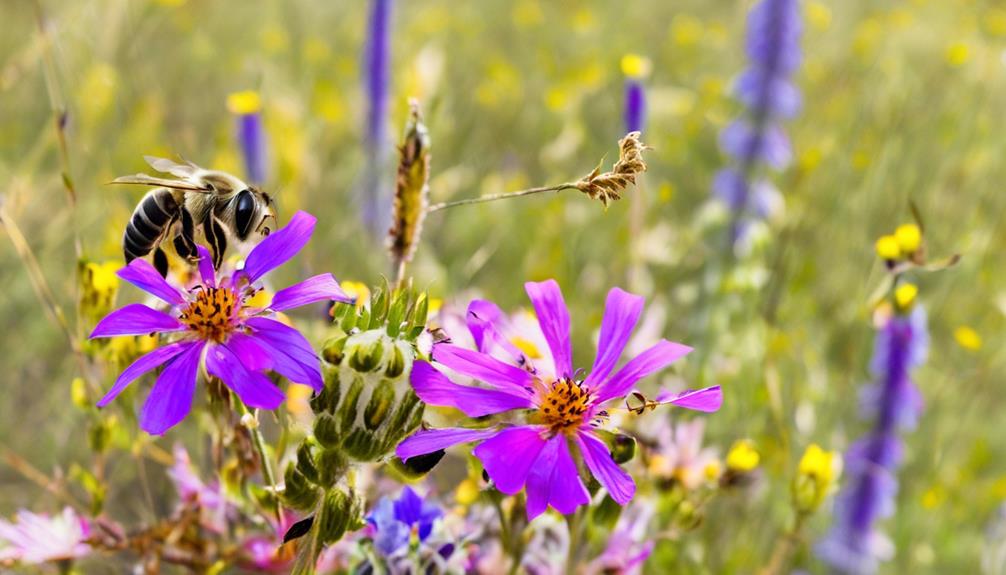
Despite their crucial role in the ecosystem, Texas Leafcutter Bees face numerous threats that could potentially jeopardize their survival. Pesticide exposure, habitat loss, and climate change are all significant challenges that these bees confront.
Threat | Impact |
|---|---|
Pesticide Exposure | Pesticides harm bees directly by causing mortality and also indirectly by disrupting their reproduction and foraging behavior. |
Habitat Loss | Urbanization and agriculture destroy the bees' natural habitat, reducing the availability of nesting sites and food sources. |
Climate Change | Changes in temperatures and weather patterns can disrupt the bees' lifecycle and availability of their plant food sources. |
You might ask how you can help. Conservation efforts focus on curbing these threats. Reducing pesticide use, protecting natural habitats, and mitigating climate change are all key strategies. Planting indigenous plants can provide food for the bees while leaving fallen leaves and stems provides potential nesting sites. Advocating for policies that limit pesticide use and mitigate climate change will also contribute significantly to saving these vital pollinators. Remember, every small action can have a big impact.
Conclusion
So, you see, the Texas leafcutter bee is a fascinating specimen. Its unique lifecycle, nesting habits, and ecological role are truly remarkable.
But it's under threat, and conservation efforts are vital. Understanding these bees isn't just about appreciating nature's diversity, but also about recognizing our role in their survival.
Let's keep learning, appreciating, and protecting these amazing creatures, for their sake and ours.

